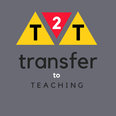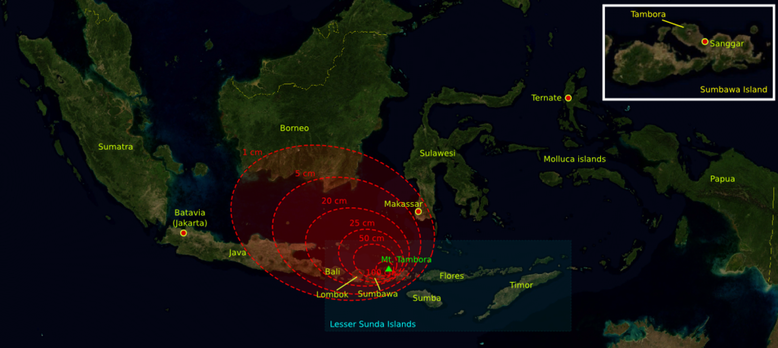1800 and Froze to Death
|
English/Language Arts
Explore themes in writing--the hook
After reading the first sentence to this minute, ask students why this is a great “hook.”
What kinds of images does it suggest and what questions does it raise? Why do you
think Adkins calls the event a “big bang,” and where else have you heard this term?
After reading the first paragraph, students will want to read on to answer the questions
it raises, first, ask them to identify what words are superlatives, and how these words
add drama to the paragraph.
Explore punctuation
Adkins uses quotation marks in three places. Most young readers are familiar with
quotation marks used around dialog. In this minute there is no dialog but quotation
marks are used. Students should identify each instance where quotation marks are used
and explain why Adkins chose to enclose the word or phrase in quotations. How does
this punctuation clarify the meaning?
Explore literary connections
Adkins notes that Mary Shelley wrote Frankenstein during the dreary summer following
the volcanic eruption. How are authors influenced by their surroundings or events
unfolding during the time of their writing? Are their other examples in history where
global events have inadvertently resulted in a famous book?
Social Studies
Explore Economics
Adkins describes the misery inflicted on the poor by the literal fallout of the volcano.
Why were poor people affected more severely by this disaster? Climate change from
global warming threatens society today. What parallels can be drawn between the
economic impacts of a cooling planet in the 1800s to a warming planet in the 21st
century? Ask students to predict how climate change today might impact agriculture
and affect farmers worldwide.
Explore Geography
On a map or globe of the world, locate the places Adkins refers to. Estimate the
distances between the volcano and each location. Explain how ash was transported
great distances.
STEM
Explore natural history
Tambora was a devastating volcano, but what other volcanoes throughout history have
had a major impact either locally or globally? One of the affects of the volcano was a
surge in water born diseases. Explore cause and effect as it relates to disease and
natural disasters.
Explore geology
What causes a volcano, and can scientists predict volcanic eruptions? Locate the
ring of fire on the globe and introduce students to more information about volcanoes
here: https://spaceplace.nasa.gov/volcanoes2/en/
Watch a video about plate tectonics here:
https://www.nationalgeographic.org/media/plate-tectonics/
and use National Geographic’s resource library to learn about volcanoes:
https://www.nationalgeographic.org/topics/resource-library-
volcano/?q=&page=1&per_page=25
Explore themes in writing--the hook
After reading the first sentence to this minute, ask students why this is a great “hook.”
What kinds of images does it suggest and what questions does it raise? Why do you
think Adkins calls the event a “big bang,” and where else have you heard this term?
After reading the first paragraph, students will want to read on to answer the questions
it raises, first, ask them to identify what words are superlatives, and how these words
add drama to the paragraph.
Explore punctuation
Adkins uses quotation marks in three places. Most young readers are familiar with
quotation marks used around dialog. In this minute there is no dialog but quotation
marks are used. Students should identify each instance where quotation marks are used
and explain why Adkins chose to enclose the word or phrase in quotations. How does
this punctuation clarify the meaning?
Explore literary connections
Adkins notes that Mary Shelley wrote Frankenstein during the dreary summer following
the volcanic eruption. How are authors influenced by their surroundings or events
unfolding during the time of their writing? Are their other examples in history where
global events have inadvertently resulted in a famous book?
Social Studies
Explore Economics
Adkins describes the misery inflicted on the poor by the literal fallout of the volcano.
Why were poor people affected more severely by this disaster? Climate change from
global warming threatens society today. What parallels can be drawn between the
economic impacts of a cooling planet in the 1800s to a warming planet in the 21st
century? Ask students to predict how climate change today might impact agriculture
and affect farmers worldwide.
Explore Geography
On a map or globe of the world, locate the places Adkins refers to. Estimate the
distances between the volcano and each location. Explain how ash was transported
great distances.
STEM
Explore natural history
Tambora was a devastating volcano, but what other volcanoes throughout history have
had a major impact either locally or globally? One of the affects of the volcano was a
surge in water born diseases. Explore cause and effect as it relates to disease and
natural disasters.
Explore geology
What causes a volcano, and can scientists predict volcanic eruptions? Locate the
ring of fire on the globe and introduce students to more information about volcanoes
here: https://spaceplace.nasa.gov/volcanoes2/en/
Watch a video about plate tectonics here:
https://www.nationalgeographic.org/media/plate-tectonics/
and use National Geographic’s resource library to learn about volcanoes:
https://www.nationalgeographic.org/topics/resource-library-
volcano/?q=&page=1&per_page=25
© Karen Sterling, 2018 - May be used for educational purposes without written permission



